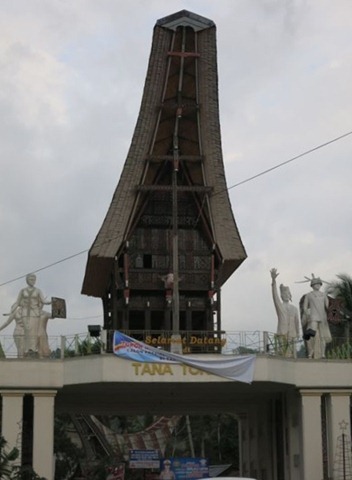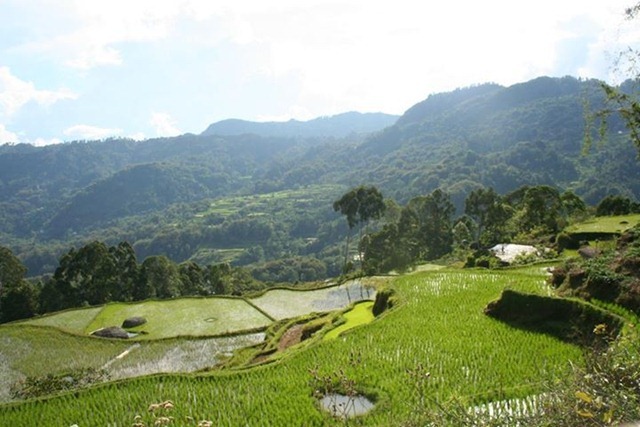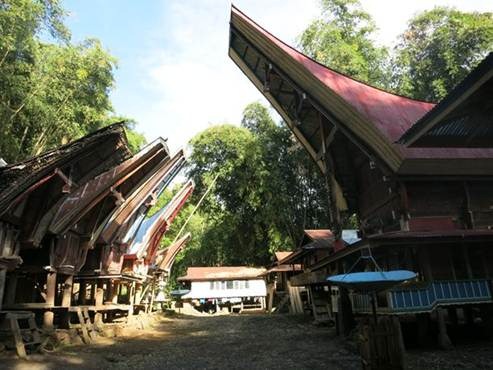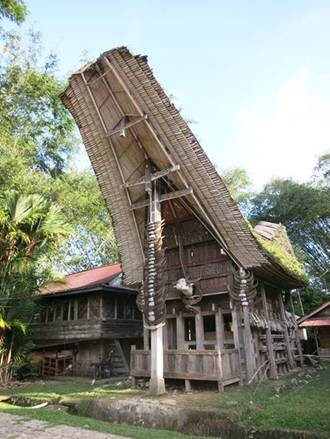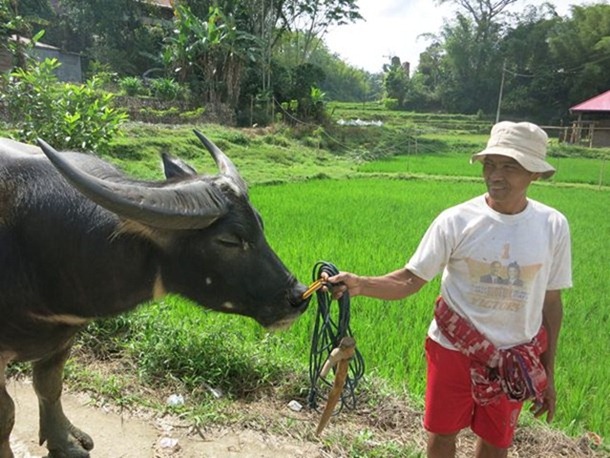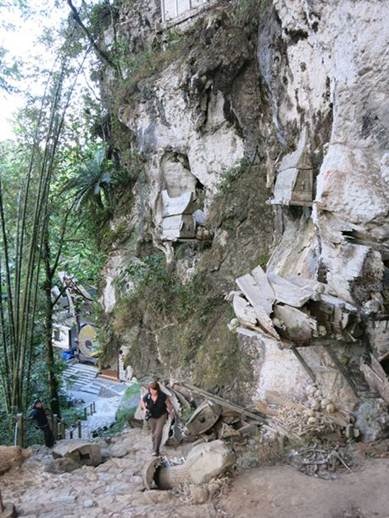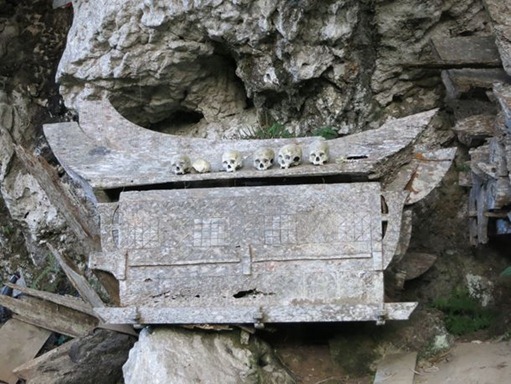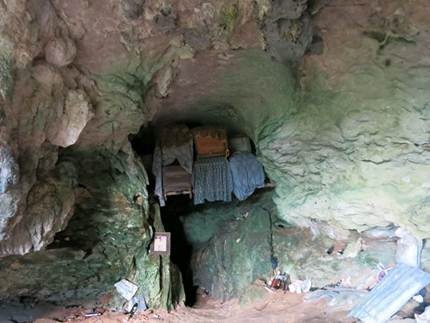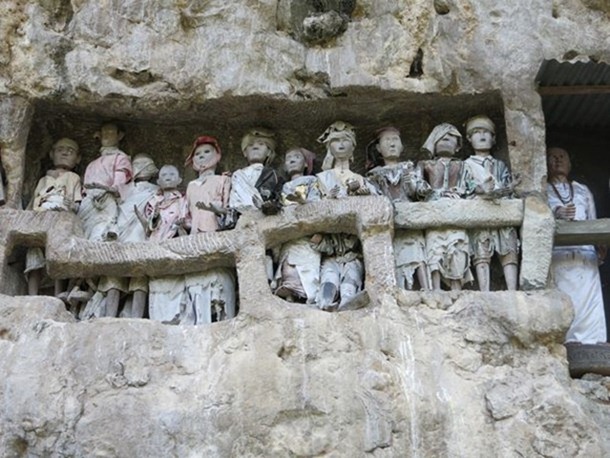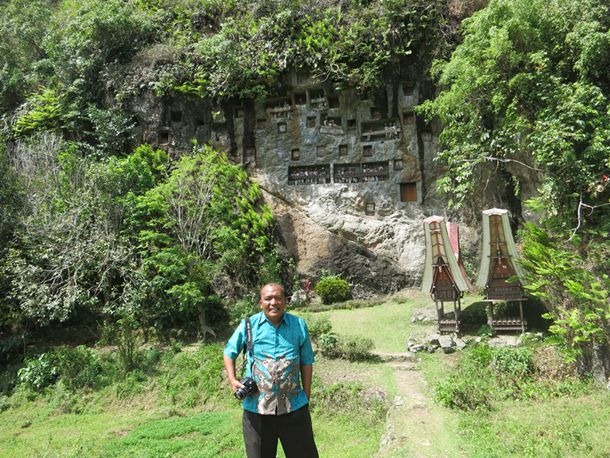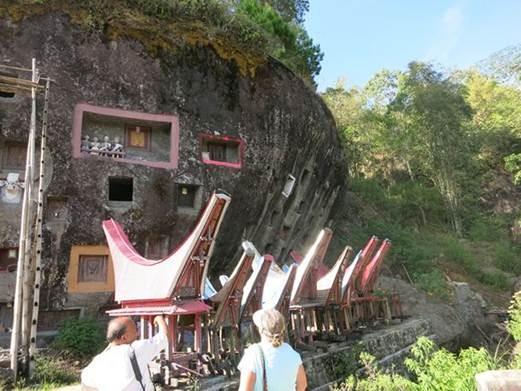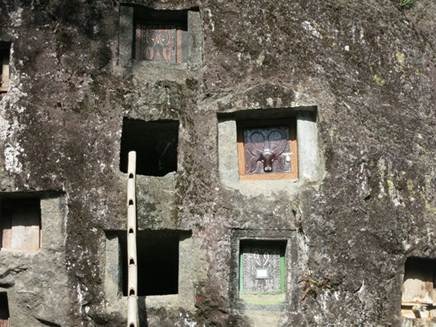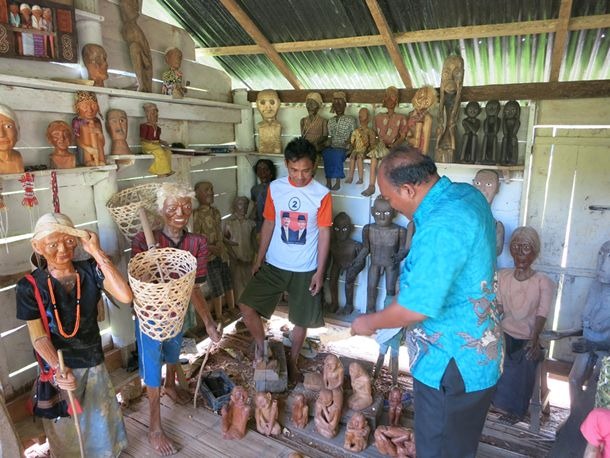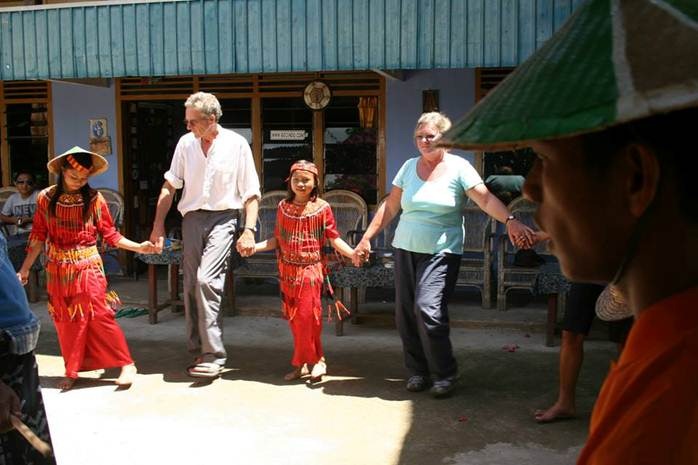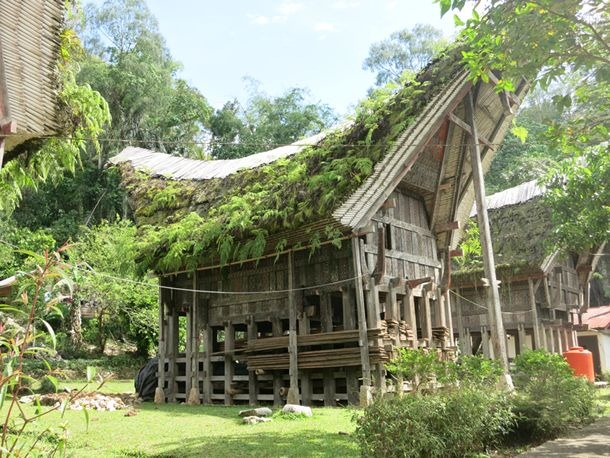Tana Toraja, The rugged highlands of South Sulawesi

|
Gryphon II was left in the care of Sempo who first took us by water taxi to the Bangkoa Quay where we were met by our guide Rusli and Jamie who was introduced as an excellent driver, as it turned out he needed to be. We set off on a 10 hour journey to Tana Toraja. Rusli proved to be an excellent guide to Tana Toraja as well as the regions en route. He arranged stops on the way for us to see the acres of milk fish and carp ponds that are fed by salt water sections of local rivers and Bugis villages with their typical houses on stilts along magnificent mountain passes. Rusli was good company for the 4 days of the tour, he speaks excellent English which he claims to have learnt largely from the BBC World Service… and it shows! He has a good BBC accent. His knowledge of the customs and history of the region was excellent, he was able to understand our questions and interpret some of the more obscure social organisation of the Torajans.
For us Tana Toraja is simply unique, an amazing part of the world where the culture, customs and history are fascinating whilst the landscapes, and architecture are extremely beautiful. We found the Torajan people were gracious and hospitable and we are grateful that we were able to experience their society and traditions first hand. The first thing you notice on arriving in Toraja is the stunning scenery of mountains, terraces of padi, coffee, cocoa, pine trees and wonderful skies.
The next thing one notices is the magnificent tongkonan (traditional houses). These are just extraordinary and said to be echoing the massive horns of the buffalo, which is the major status symbol here, or the bow and stern of a boat which local mythology suggests is how the ancestors arrived from the south being driven into the highlands by other powerful tribes such as the Bugis. These tongkonan also act as the meeting place for family gatherings and may not be bought or sold.
The larger buildings on the right in this picture are the homes that are still lived in (complete with satellite dish), whilst the smaller buildings in replica on the left are barns where the rice harvest is stored. We had seen photos of these homes before we arrived and had thought they were just museum pieces but they are still being built everywhere one goes. They are beautifully carved and decorated in white, black, yellow and red. Local craftsmen are kept very busy. . The houses are built largely from teak with stone plinths supporting palm wood legs that are strong but also very smooth making it difficult for rats to get up. No nails are used in the construction just clever joints with pegs, whilst the roofs are made from layers of bamboo. They are surprisingly spacious inside. The buffalo horns exhibited on the front of this house demonstrate the status and wealth of the residents as they are a record of the number of these very costly animals sacrificed in previous funeral ceremonies. It is these funeral ceremonies that dominate the lives of the Torajans. Their beliefs are bound up in the animism that pre-dates the Dutch and the Christianity that they brought with them, a time when Toraja was fairly isolated from the rest of Sulawesi by virtue of its terrain. Although most of the population here are now Christian they have not given up their animist beliefs and there is great significance given to the earth and the sky as well as the death rituals. It was hard for us to grasp the complete nature of the beliefs but it is something like this. When someone dies they are embalmed and kept in the living room on the east side of the house and treated as if they were still a sick person. In other words one is still expected to greet them and food & drink is brought at mealtimes. All this continues until the family has organised the funeral ceremony which may take many months but can take up to two years as the extended family have to save up enough money to bring buffaloes and pigs to be sacrificed as a tribute to the deceased. These buffalo are considered sacred animals and are kept simply for the funeral ceremony, they are not milked and not used for work in the fields - the men do that. The most valuable are those with the largest horns, spotted beasts or better still an albino. These animals command very high prices. This one was a relatively cheap one at £5,000.
Not only does the family have to save up for the livestock but whole new temporary buildings are erected to house all the relatives, a special funeral bier has to be built and the grave has to be prepared. This would be easier if it was not for the belief that it is important to be buried as close to the sky as possible. In the past this sometimes meant that coffins were suspended from cliffs but today graves are usually carved from the solid rock.
The problem with hanging a coffin from a cliff is that it eventually falls down and a new funeral ceremony has to be organised by the family which can take many months or years. In the meantime granny might be hanging about a bit.
These very old hanging coffins are disintegrating and some have collapsed onto the ground below where piles of bones will lie until a new funeral can be afforded. These people are never cremated and never put into the ground unless they are very poor or Muslim of whom there are very few.
Awaiting the next funeral. This old practice of hanging graves no longer happens because of these problems although the Torajans do not find this macabre as Europeans might. A rather emotional site is that of a grave tree at Kambira where babies were buried instead of in the rock face or in caves. The animist belief was/is that the sap of the tree would continue to feed the baby after death like the mother’s milk. This practice persisted until 1987, there were three trees two of which died requiring re-burials but one tree survives with about 18 babies buried inside cavities cut deep into the trunk. Cave burials for one family.
Some of the coffins, usually of less well-endowed families, are laid in caves but most today are buried in the rock face, often protected by Tau Tau - effigies of the dead carved by local craftsmen. This originated as a reminder to the living of what their ancestors looked like, they are cleaned and the clothing is changed periodically but some graves now have large framed photographs instead. Water and sometimes food is left at the gravesite together with belongings such as a favourite chair or in one case a carving of the deceased’s dog.
Tau Tau effigies of the dead.
Rusli with funeral biers, cliff face stone graves and Tau Tau on the balcony at Lemo village. In the photograph below the miniature houses in the foreground are the biers on which they bring the coffins to the burial site. They are elaborately built and carved as replicas of the houses but are abandoned after a single use. The Tau Tau can be seen looking out from the site of one rich person’s grave.
These funeral arrangements were originally for the royal families of the Torajan tribe but were taken up by the very rich and now are followed by any family that can afford them. Cave burials for the less wealthy are more vulnerable and for the few who are buried in the earth, it is believed the soul will have a very long struggle and may not reach heaven. Torajans are so strong in their beliefs that they will not have clay tiles on their roofs as they do not wish to be under earth either living or dead. Unfortunately bounty hunters have plundered here including foreign dealers in relics posing as or indeed are anthropologists. Even bones have been taken, which makes the ancient hanging graves and the current cave burials most vulnerable. Tau Tau’s are stolen and some families now keep these at home rather than at the grave sites for fear of theft. Some of the richer people have expensive mausoleums for the family at the foot of the cliff. Some of them have the occupations of the deceased written on them and in one case the man had been a maths professor at a local university. Remember that these people are nearly all Christian although the predominate symbol on the graves is not the cross but the buffalo.
Note the notched bamboo pole in this photo which is a ladder used by the local carvers to carve out the grave and eventually for a single man to climb with a coffin on his shoulder to place the coffin in the grave which is then sealed and embellished. Carving is in great demand in Toraja. Kete Kesu village is a carving village where buffalo heads, coffins, Tau Tau and grave doors/seals are carved. The skills are passed on from father to son.
We missed an actual funeral ceremony but they are definitely not for vegetarians. Many tens of buffalo and pigs are tethered to a standing stone and sacrificed under gory conditions. The meat is butchered on the spot both for the funeral feast and to be distributed amongst the guests and the wider community. The most extraordinary thing about the buffalo is that although they lead a pampered life, the Torajans use them for bull fighting the same as they do with rather pampered cockerels - this often happens at the funeral events which last for days and are very celebratory occasions. For our visit here we spent two nights in a Torajan owned hotel which was beautifully carved like the houses and had a small (cold) open air swimming pool set in lovely grounds surrounded by emerald rice padis. One had to take care not to step on one of the many enormous frogs that came in from the watery fields at night. One night was spent at a homestay high up in the mountains. Getting there was extremely nerve wracking as the stone road was closed due to a land slide and our fearless Torajan driver, Jamie, took us on an alternative track for which we had our eyes closed most of the time. A further highlight was a stop at the local residential Music School for children aged 7-18 years, run by a protestant priest/teacher/instrument maker. We were entertained with pipes and voice and danced traditional dances with the children.
Typical Torajan colours and dress covered in shoulder and waist girdles of beads, with a beaded headband. These are also typical of Myanmar (Burma) apparently. Our final day arrived and Rusli took us to the livestock market to get a good look at buffaloes some of which are the price of a car. They certainly are extremely handsome chaps, continually washed down so that their hide and horns gleam for prospective buyers.
Our journey back was quieter, our minds full of images and mulling over the strange concepts that we had been confronted with. Rusli chose perfect places for us to visit and provided us with excellent information as well as highlighting aspects of Torajan life and history and ensuring that we had a good knowledge of this special place and its people. We need to do some reading about the Torajans now to extend our understanding but we will treasure the memories of this tour as one of the most interesting experiences we have had.
|
